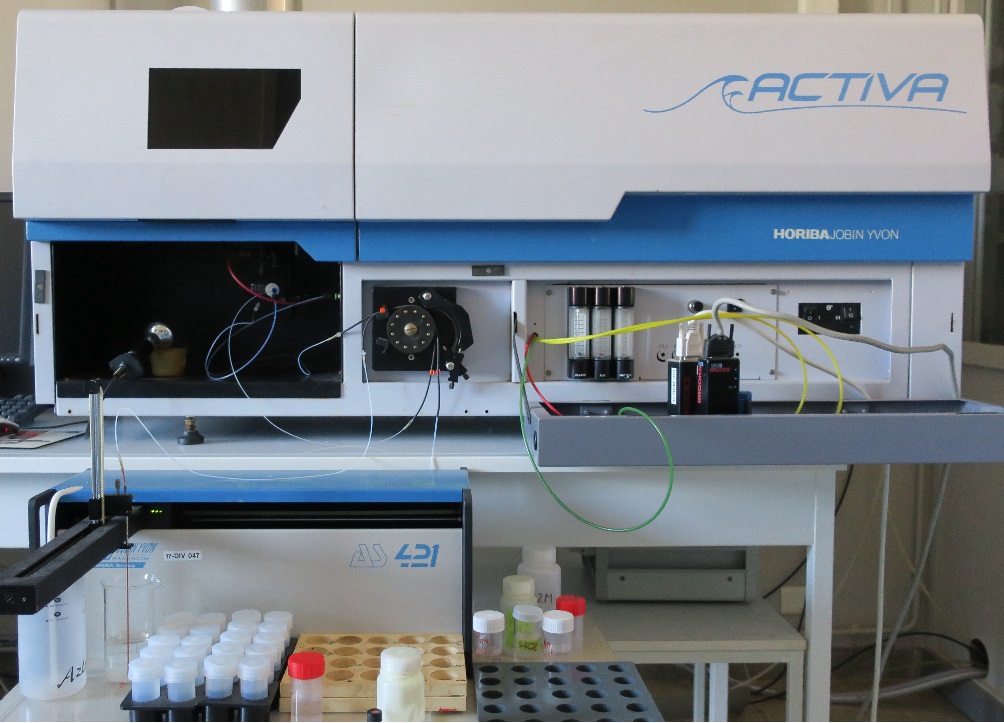Working principle / output
ICP-AES (inductively coupled plasma atomic emission spectrometry), also referred to as ICP-OES (inductively coupled plasma optical emission spectrometry), is a multi-elemental technique for the analysis of major and minor elements. This technique uses an inductively coupled plasma to excite atoms and ions that emit electromagnetic radiation at wavelengths characteristic of a particular element. The analyses are carried out in liquid form, after acid dissolution or alkaline fusion for solid materials (e.g., natural or synthetic powders, rocks) or after adequate dilution for liquids (e.g., water, brines).
 |
Key features
- Model: Horiba Scientific Activa
- Determination of more than 70 elements
- Detection limit: 1-20 ppb (µg/L)
- Extended spectral range from 160 to 800 nm
- Few matrix effects and high spectral selectivity which allows a greater choice of non-interfered wavelengths to be used for multi-line analysis
- Linear response over 5 decades minimum, which avoids detector saturation and risk of curvature and consequently improves the statistics of the results
- Analysis of solutions with a high salt content (e.g., seawater, brines)
- Automatic sample changer
Contact
Feel free to contact Steve PEUBLE for further information (click to send Email).